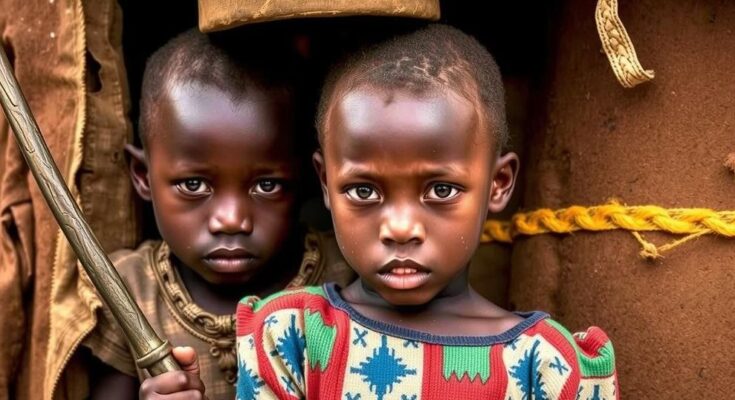Children in the DRC have become increasingly involved in armed conflicts, with many militias, particularly the M23, recruiting minors as young as 10. The ongoing violence has led to widespread suffering among these youths, who often face severe exploitation and abuse. Organizations are working to rehabilitate those who escape militiamen, but the urgent need for intervention remains critical due to the worsening humanitarian situation.
In the Democratic Republic of the Congo (DRC), the longstanding conflict has seen children, some as young as 10, being recruited into armed groups. One such case is Constance, who, at the tender age of 13, joined the Alliance of Patriots for a Free and Sovereign Congo (APCLS), hoping to escape her impoverished village life. The brutal reality of militia existence soon became apparent, as she faced violence and exploitation. The DRC has witnessed the recruitment of child soldiers, dubbed “kadogos,” increasing significantly since the resurgence of the M23 conflict in late 2021, with children frequently being forced or manipulated into joining militia ranks. Amidst this chaos, various NGOs report that the actual number of child soldiers is much higher than official estimates, making these children especially vulnerable, as they are often used as fodder in the ongoing violence. The situation in North Kivu is dire, with armed groups and militias continuing to thrive amid economic despair, causing many children to seek belonging and income through joining these factions. Martin, a boy who enlisted at 13 to earn money, recounts the brutality he experienced, leading to his realization of the dire consequences of such decisions. Despite some negative attention on the issue, many children manage to escape and reintegrate into society, receiving vocational training and support, yet they remain haunted by their experiences. Individuals like Modeste and Gilbert illustrate resilience amidst adversity, as they strive for a brighter future beyond militia life. Ultimately, the tragic exploitation of children in the DRC’s conflict serves as a stark reminder of the urgent need for intervention, support for rehabilitation, and education initiatives aimed at breaking the cycle of violence that endangers the lives of countless minors.
The recruitment of child soldiers has been a disturbing aspect of armed conflict in the Democratic Republic of the Congo. Initially stemming from regional wars in the 1990s and early 2000s, this practice has only intensified, particularly with the recent M23 conflict. Armed groups, such as the Alliance of Patriots for a Free and Sovereign Congo, have repeatedly exploited vulnerable children, often forcing them into combat roles. With poverty affecting approximately 75% of the DRC’s population, many children see joining militias as one of the few options available to them for survival. International organizations have documented serious violations against these minors, compounding the tragedy of their situation.
The ongoing conflict in the DRC has created a dangerous environment for children, who are increasingly targeted and manipulated into joining armed groups. Constance’s tragic experience and the stories of other children like Martin, Modeste, and Gilbert highlight the brutal realities faced by child soldiers. To combat this crisis, urgent action is required to address the socio-economic conditions driving children into militarized groups, alongside comprehensive efforts to rehabilitate those who escape their grasp. The global community must unite to protect these vulnerable individuals and ensure that their rights are upheld.
Original Source: www.theguardian.com




